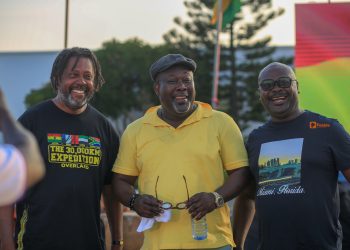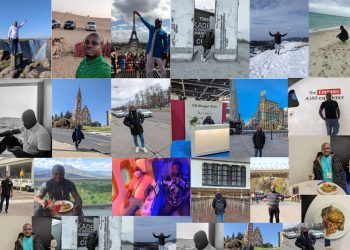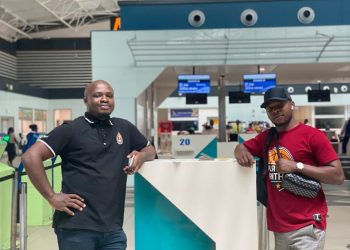Most of the castles and forts in Ghana were built and occupied at different times by traders from Portugal, Spain, Denmark, Sweden, Holland, Germany and Britain. These places played a significant part in slave trade many years ago. In this article, Jetsanza.com looks at some of the forts and castles in Ghana.
There are about 32 separate properties in Ghana as documented by The UNESCO but we would look at the few with strong significance to the history of Ghana.
The Top 10 Forts And Castles In Ghana
The Elmina Castle
The Elimina Castle was built by the Portuguese during their exploration in Africa about 500 years ago. It served as a place of rest and also for business. They transported black slaves from there since it was located at the seashore. It tells the harrowing history of the trans-Atlantic slave trade. It is a UNESCO World Heritage Site and located in the Central region which is well-known for its forts and castles.
Anomabu Castle
Popularly called the Fort William, Anomabu Castle is situated in Anomabu on the coast of the Mfantsiman Municipal Assembly. The town has about 14,389 people. It was built between 1753 and 1760 by the European trade rivalry in the 17th and 18th centuries. The earliest lodge was built in 1640 by the Dutch using earthwork, changed hands four times – from the Dutch to Swedes, then to the Danes, back to the Dutch and finally to the English.
The James fort
Built by the British in 1673, the Fort James serves as a reminder of former colonial rule though it is no longer serving its main purpose, it shows the struggle and progress Ghana has been through. You can also climb the lighthouse for the views and take some photographs of the township. Painted red and white, the Fort also serves as a lighthouse.
Cape Coast Castle
The Cape Coast Castle was built by the Portuguese in the 15 Century. It is the second largest after the Elmina Castle in the country. For nearly a century, there was a ding-dong competition among the Portuguese, Dutch, Danes, Swedes and English to gain control of Cape Coast. The fort remained in English hands till the late 19th century serving as the West African headquarters seat of the president of the Committee of Merchants and later as the seat of the British governor.
Christianborg Castle
The Christianborg castle is also known as the Osu Castle and has been traced to the early 17th century as facility used to store slaves for transport into foreign countries.
It is unique among the castles and forts in Ghana as it served as Government House during various periods in the 19th centuries. It was once the Danish Gold Coast headquarters.
Fort St. Jago
Located around Elmina Castle, Fort St. Jago was built by the Portuguese in 1555 and 1558 to serve as a chapel. It is also called Coenraadsburg. It had no commercial purpose as it was purely used as a military base by the Dutch. In 1503, according to historical narration by the Portuguese Diego de Alvarenga, a Portuguese missionary converted and baptized the paramount chief of the Efutu Kingdom on the Mina coast together with 300 of his subjects. It helped the Dutch launched their successful land attack on Elmina Castle. It had no commercial purpose as it was purely used for military purposes by the Dutch. It is one of the oldest purely military architecture of the Gold Coast.
Fort St. Anthony
In 1503, the Portuguese had built a trading post in Axim, near the edge of the River Ankobra, but they had to abandon it due to insistent attacks by the local people. They then constructed, in 1515, a massive triangular fort on a small promontory closer to the River Ankobra named ‘Santo Antonio’. In 1642, the Dutch captured the fort and subsequently made it part of the Dutch Gold Coast. The fort was expanded by the Dutch. Some of these expansions were to improve defence while others housed slaves before they were loaded onto transport ships.
Fort Batenstein
Batenstein literally means “profit fort” in Dutch. It’s located behind Butre village in the Western Region of Ghana. It was built by the Dutch in 1656 but was taken by Britain in 1665, abandoned in 1818-27, rebuilt by the Dutch, in 1828, relinquished by treaty and remained in Dutch possession until 1872, when it was transferred to the British.
Fort Apollonia – Beyin
The name Apollonia, chosen for the fort was first conferred on the area by the Portuguese explorer who sighted the place on St. Apollonia’s Day years after the Slave trade had ended. In 1868, Fort Apollonian was transferred to the Dutch who renamed it after their monarch, Willem III, and held it till 1872.
Fort St. Sebastian
Fort St. Sebastian was built as a Dutch lodge in 1526 and abandoned by the Portuguese in 1600. It is located at Shama in the Central Region of Ghana. The Dutch carried out repairs in 1640-42.
Other Forts in Ghana are:
- Fort Augustaborg at Teshie
- Fort Vernon, Prampram
- Fort Fredensborg at Old Ningo
- Fort Prinzensten at Keta
- Fort Patience at Apam
Still have some travel questions? Ask in our Travel WhatsApp Group.







